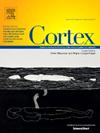The self in motion: The advantage for one’s own movements at an implicit but not explicit level
IF 3.2
2区 心理学
Q1 BEHAVIORAL SCIENCES
引用次数: 0
Abstract
This study investigated the possible dissociation between implicit and explicit self-motion recognition. Converging evidence suggests that the distinction between self and other in the corporeal domain might rely on the integration of visual and sensorimotor representations of the body. Notably, previous studies have demonstrated that individuals are faster and more accurate in discriminating pictures depicting their own body effectors compared to those of others, the so-called self-advantage effect. Such facilitation has been found when participants had to recognize the bodily self in implicit but not explicit tasks. We hypothesized a similar advantage for implicit discrimination of one’s own body movements relative to those of others, due to underlying sensorimotor mechanisms. Participants were presented with pairs of schematic movements (i.e., motion patterns of one’s own skeleton and those of other bodies). In the Implicit task, they judged whether the movements were the same or different. In the Explicit task, they judged whether there was or not their own movement. Results showed facilitation in terms of accuracy and response time with movements belonging to the self than to other people in the Implicit task, indicating a self-advantage effect. Such a facilitation did not emerge in the Explicit task. Overall, the present findings disclose the contribution of motor information in self-awareness and body representation, supporting the role of sensorimotor mechanisms in implicit recognition of bodily self.
运动中的自我:一个人在隐性而非显性水平上的运动优势
本研究探讨了内隐和外显自我动作识别之间可能存在的分离。越来越多的证据表明,身体领域中自我和他人的区别可能依赖于身体的视觉和感觉运动表征的整合。值得注意的是,之前的研究已经表明,与他人相比,个体在区分描绘自己身体效应的图片上更快、更准确,这就是所谓的自我优势效应。当参与者必须在内隐而非外显任务中识别身体自我时,发现了这种促进作用。我们假设,由于潜在的感觉运动机制,一个人对自己的身体运动相对于他人的运动的内隐歧视也有类似的优势。研究人员向参与者展示了成对的运动示意图(即自己骨骼和其他身体的运动模式)。在内隐任务中,他们判断动作是相同还是不同。在显性任务中,他们判断是否有自己的运动。结果显示,在内隐任务中,对属于自己的动作的促进在准确性和反应时间方面优于对他人的动作,表明存在自我优势效应。这种促进作用并没有出现在显性任务中。总的来说,本研究揭示了运动信息在自我意识和身体表征中的贡献,支持了感觉运动机制在身体自我内隐识别中的作用。
本文章由计算机程序翻译,如有差异,请以英文原文为准。
求助全文
约1分钟内获得全文
求助全文
来源期刊

Cortex
医学-行为科学
CiteScore
7.00
自引率
5.60%
发文量
250
审稿时长
74 days
期刊介绍:
CORTEX is an international journal devoted to the study of cognition and of the relationship between the nervous system and mental processes, particularly as these are reflected in the behaviour of patients with acquired brain lesions, normal volunteers, children with typical and atypical development, and in the activation of brain regions and systems as recorded by functional neuroimaging techniques. It was founded in 1964 by Ennio De Renzi.
 求助内容:
求助内容: 应助结果提醒方式:
应助结果提醒方式:


